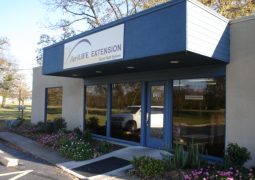Fall Tree Planting by Mario Villarino

[adning id=”33097″]

The fall season is one of the most underutilized planting season for trees. In our county, the majority of the trees available for planting are offered in the spring season, although some retailers are slowly offering trees for sale during the fall. The biological reasoning for planting trees during the fall is to provide enough time for the tree to grow before the winter and to avoid scorching hot days of the summer. It is according to Texas A&M Agrilife Extension, the fall season the most effective time to plant trees. In Hopkins County, trees play a significant role in the landscape. Many home sites rely and depend on trees to highlight the gardens. There are many reasons for maintaining trees, too many to get into here. One of the most significant challenges when maintaining trees in landscapes is proper plant sucession and this is my topic today. Regardless of the expectation of the tree (shade, nut production, flowering, etc) trees even in the best case scenario will eventually age and die. One of the responsibilities as home owners is to actively plant trees that eventually take the place of mature ones. Many tree species available in the market have specific attributes and finding the “perfect” tree is almost imposible. But a combination of trees can certainly as a group easily satisfy the requirements of the home owner. When looking for tree varieties to purchase, I like to have a clear definition of those attributes wanted and find the best option or combination of trees. Look for several trees species and combine them to get the best performance. Once you find the trees you want, start the planting process. According Texas A&M AgriLife Extension, start by selecting a site that is in full sun. Dig the hole twice as wide as the root ball (container), and no deeper than the height of the root ball. The soil that you dig out of the hole is what you use to backfill around the root ball. No soil amendments are recommended when planting a tree; Therefore, no compost, peat moss, or shredded pine bark should be added to the backfill.After planting the tree, build a 4-inch tall berm around the edge of the hole. Fill the berm with a mulch (i.e. shredded bark or compost). The mulch and berm make it easier to water the tree and reduce weed competition.For most trees, staking is not recommended; however, if the tree trunk is not sturdy enough, use two stakes, one on either side of the tree, and give the trunk support for the first year only. Below are diagrams of a typical tree planting. Right after planting, water the tree in by filling the bermed basin with water. This will settle the existing soil around the root ball. For the first week after planting, lightly water the tree every day (about one pint to one quart of water each day). The second week, water every other day with about one to two quarts of water. During week three, water every third day with two to three quarts of water. Week four and beyond, water once a week if needed. The goal is to wean the tree slowly off of supplemental irrigation, and produce a root system large enough for the tree to thrive on natural rainfall.
REMEMBER: These are just guidelines. Use your index finger to check the soil moisture under the mulch. If the soil is cool to the touch, do not water. If it is warm and dry, then water. More plants are killed by over-watering than by under-watering.
Coming Up:
Northeast Texas Dairy Producers Conference (DOPA) October 30, 2019- $10 Register by calling 903-885-3443.
PAT CEU Credits: November 6, 2019 $30, Register by calling 903-885-3443.
Pesticide Applicator Certification (new licensee only): November 13, 2019. $30, Lunch included. Register by calling 903-885-3443.
[adning id=”33207″]
[adning id=”33207″]
[adning id=”33207″]













